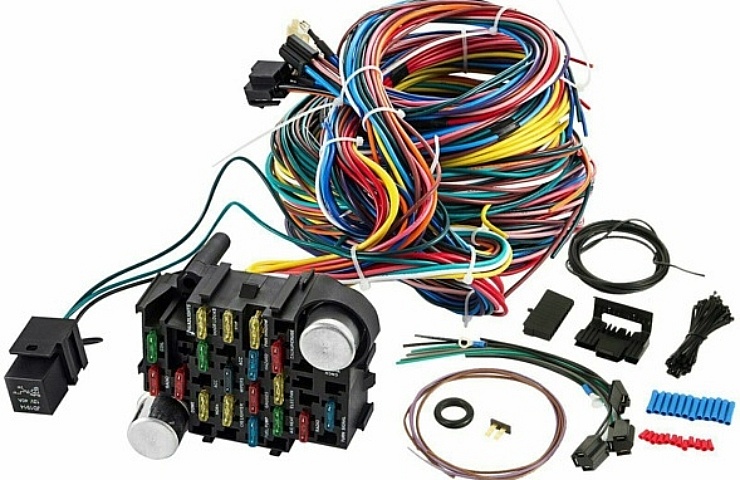Contents
The wiring under a car’s dashboard was neat and tidy when the car first rolled out of the factory. But over the years, they can get messy—especially when aftermarket radio and other electronics are added. There’s a solution: a new wiring harness with adapters and looms.
Installing a new electronic car accessory can trigger the need for a new wiring harness. In these cases, sometimes you can figure out the wiring easy enough. But there are other times when you need to toss the white flag, surrender, and get organized with a new harness.
Shop now for car wiring and wiring harnesses
Consider an Adapter
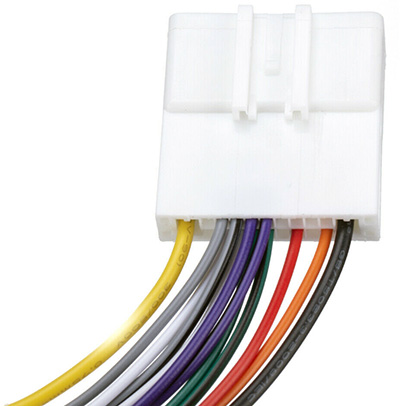
An adapter allows you to keep the factory-supplied wiring system intact.
There are two options when wiring in a new component to your car.
- Splice wires into an existing circuit.
Splicing means exposing the existing copper wire. Then, use a plastic connector or solder to connect the new wire into the system. If you are certain that you are tapping into the correct wire, go for it. The proper approach is to splice bare wires together, solder, and cover them with new insulation or shrink wrap. - Use an auxiliary harness and adapters to keep your factory wiring intact.
eBay Motors offers wiring harness adapters for your specific vehicle. This allows you to plug the adapter in between the factory plug and aftermarket products. For example, when a new head unit and the wiring plugs don’t match up, an adapter solves the problem.
A Complete Harness for a Restoration Project
When restoring a car, it probably makes sense to start fresh with a new wiring harness package. Then, you avoid the aggravation of figuring out why a previous owner made illogical changes—like switching from a 12-gauge red wire to a 14-gauge purple wire in the middle of a circuit.
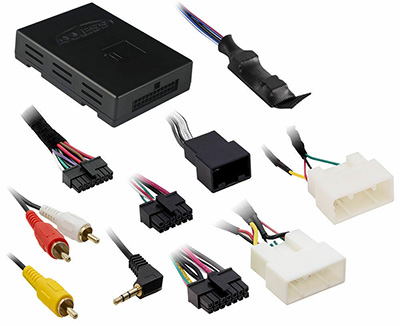
Adapter kits have multiple connectors for your car’s many electrical devices.
When comparing wiring harnesses, look for at least 12 circuits. Even if you don’t require additional circuits now, it’s better to make room for more devices you might add later.
Sellers often print the purpose on the wire to avoid confusion. It’s a big help, for example, to have “left rear taillight” or other labels printed along the full length of the wire.
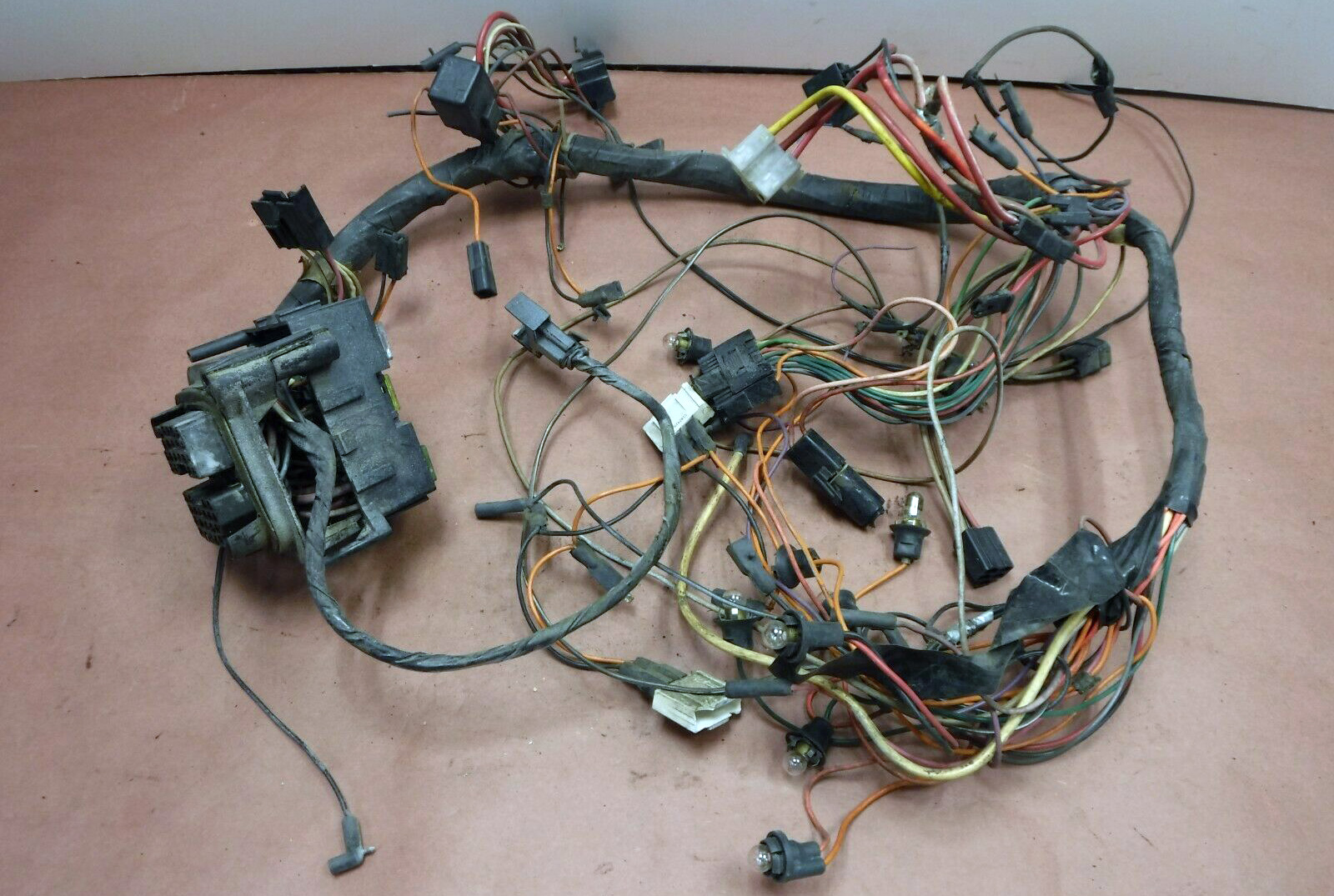
This used wiring harness shows how a car’s complex set of wires, relays, and connectors can become unruly.
Regardless, endpoint connectors should be clearly labeled. To avoid confusion, aftermarket wiring harnesses should duplicate the coloring scheme used by the automaker.
Trailer Harnesses
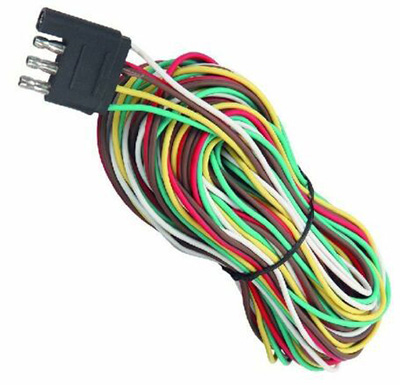
Trailer wiring can be as simple as a plug and four wires ready to splice into the vehicle.
Installing a trailer hitch can also create wiring challenges, such as properly connecting your vehicle’s lighting system to power the brake lights, turn signals, and back-up light.
A trailer hitch wiring harness allows you to splice into the existing system. But a better option often is using a pre-wired adapter. The adapter inserts into existing additional plugs provided by the automaker.
An adapter might slip onto the plug of an existing lighting device, such as a taillight housing, to mirror the connection. This makes the new device easier to install with a cleaner result.
Adapters and partial wiring harnesses are available for a variety of applications—big and small. Swapping in a new LS1 engine? A new harness helps the engine talk to all the computerized components. Want a new set of fog lights? Many suppliers supply the necessary harness to support its power needs.
Words of Advice
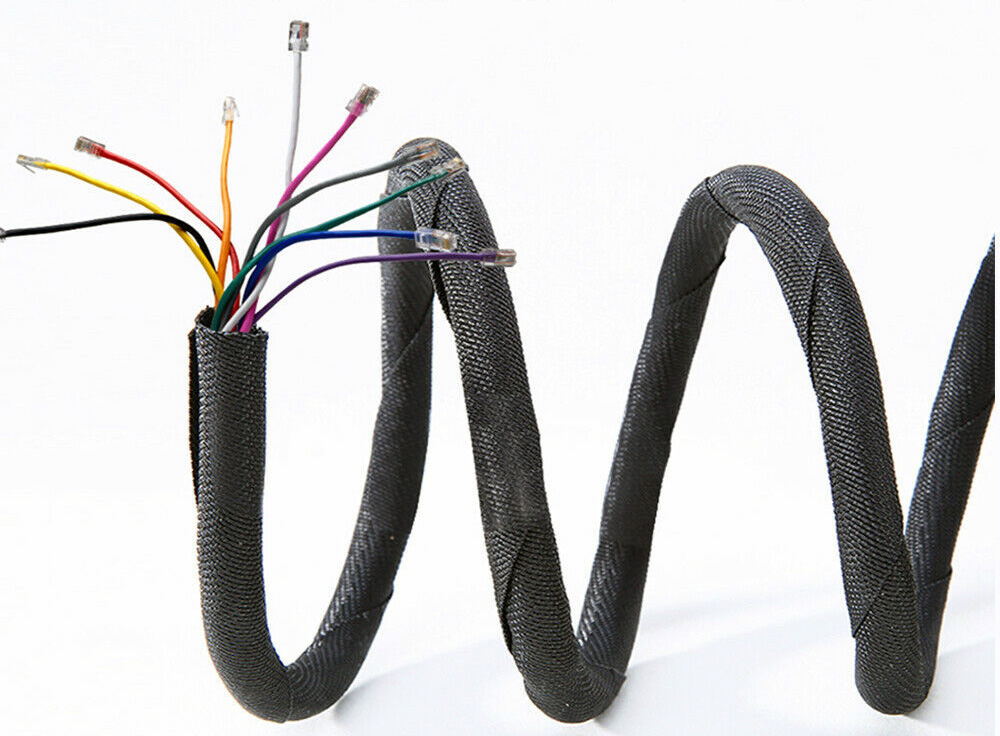
A spiral loom wraps around your wiring.
- Always disconnect the battery before tinkering with the electrical system.
- Make sure any new electrical device has a suitable fuse for safety purposes. (See our guide to car fuses and fuse boxes.)
- CAN (Controller Area Network) bus systems allow the car’s computerized components to talk to one another. But CAN bus wiring introduces another level of complexity, so proceed with caution.
- After new wiring is in place, consider using a wiring loom, which is like a sleeve to organize wires. Looms come in different sizes. They either spiral around your wiring or provide a casing to place the wiring inside.

